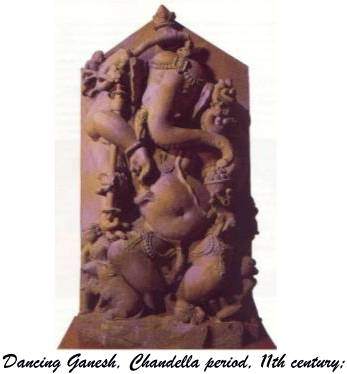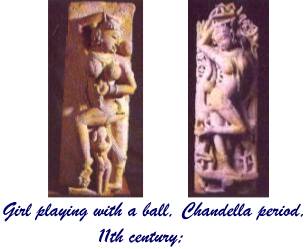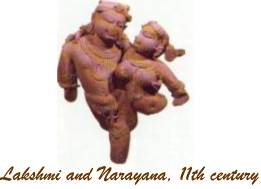World > India > Museums > Museums Of Khajuraho
Museums Of Khajuraho
The Archaeological Museum, Khajuraho

Near the sleepy, deserted village of Khajuraho in Madhya Pradesh stand some magnificent temples, the pride of Indian architecture, form an estimated 84, only 22 temples remain, some of which are Hindu, others Jain. The temples are quite special, exemplary of what is usually called the 'central Indian style' of temple architecture.
Khajuraho was once the city of temples of the Chandellas, under whose patronage the Jain and Hindu temples were built the tenth to 12th centuries. A distinguishing feature of this style of temple architecture is the high platform on which the temple were constructed. The main group of Hindu temples refered to as the 'western group' includes the Lakshmana temple (AD 954) and the Visvanatha temple (AD 999), the Chitragupta temple and, the most splendid of them all, the Kandariya Mahadeo temple. Amongst the Jain group of temples, the Parsvanatha and the Adinatha temples have sculptured panels of a very high order of artists excellence.
At the entrance to the museum are seated Two lions with thick curly manes and what appear to be welcoming grins. Inside the museum, the galleries have been divided according to the type of sculpture. There are sculptures of Shiva, his consort and family in the Shiva gallery, of Vishnu in the Vaihnava gallery and the Jain sculptures are in another gallery with an assortment of panels and bracket figures.
In the entrance hall stands a colossal sculpture dancing Ganesh. In the Kahjuraho temples, there are several depictions of this deity, but this sculptures surpasses them all. In these sculpture, Ganesh has been given three pairs of arms, each arm carrying one iconographic emblem. In one hand he holds a bowl of laddu (round sweetmeats), as he was said to have quite a sweet tooth. Even while he dances his trunk has found its way to the laddus, and it looks as though he is going to sustain his dancing with a surreptitious bite or two.
In this museum is the figure of Hari Hara, a curious example of Hindu iconography. In Hindu philosophy, there is a belief that God is one, but the All-encompassing being who creates and sustain the world appears in different forms : as Shiva, Vishnu, Devi the goddess and a host of others. In this sculpture, the artist has created the figure of one male deity which, on closer viewing, can be seen to depict Shiva and Vishnu fused together. In the hairstyle, the right-hand side is different from the left, Shiva's hair is bunched up into a high top-knot, and Vishnu wears a crown. The figure of the seated Buddha in this museum is said to be the only one of its kind to be found in Khajuraho. The Buddha is in what is called Bhumisparsa mudra (the earth-touching pose).

In the Vaishanava gallery there are several sculpture of different manifestations of Vishnu, the most beautiful one being that of Bhu Varaha. Vishnu, in one of his incarnations, assumes the form of a giant boar (varaha). There are some interesting sculpture of Surya, the Sun God, in this museum. In one of them, the figure of Surya stands straight, as he rides on his chariot drawn by seven horses in the colours of the rainbow. In Surya's hands there would have been two lotuses, but unfortunately they have been broken. In the gallery to the right of the main entrance are sculptures, panels and miscellaneous items. Among them are two lovely figures of women : the Surasundaris, as they are called, who inhabit every nook and cranny of the Khajuraho temples. In the Jain gallery there are a few sculpture of Jain Tirthankara in different poses. It is quite clear that Hindu and Jain sculpture have much in common in style, composition and the techniques of portrayal of the figures though their content and subject are so dissimilar.


Archaelolgical Museum, Khajuraho, Madhya Pradesh.
Hours : 10 am - 5 pm, closed on Fridays.
Admission : Same ticket for entry to the monument and the museum, free on Fridays.
Suggested viewing time: Half an hour.
STATE MUSEUM, DHUBELA
Excellent specimens of Yogini figures from Gurgi which may be dates between the 10th and 12th century are on display. 64 km from Khajuraho.

